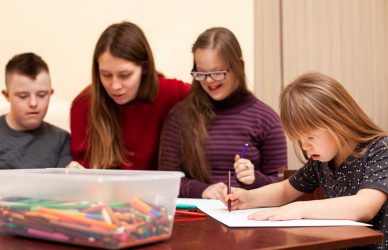Inclusive teaching strategies are the cornerstone of effective special education classrooms, ensuring that students with diverse needs receive the support they require to thrive academically and socially. In this exploration of inclusive teaching, we will delve into various strategies that empower special education teachers to create an environment where every student, regardless of their abilities or challenges, can succeed.
Understanding Inclusive Teaching:
Inclusive teaching is not a one-size-fits-all approach but rather a mindset that embraces diversity in learning styles, abilities, and backgrounds. Special education teacher jobs are in cultivating an inclusive environment that acknowledges and addresses the unique needs of each student.
- Differentiated Instruction: Catering to Individual Learning Styles
One of the fundamental pillars of inclusive teaching is differentiated instruction. Recognizing that students learn in diverse ways, special education teachers tailor their teaching methods to accommodate various learning styles. This might involve incorporating visual aids, hands-on activities, or auditory cues to ensure that every student can access and comprehend the curriculum.
By recognizing and embracing different learning styles, special education teachers can create a more engaging and accessible learning experience for all students, fostering a sense of belonging in the classroom.
- Universal Design for Learning (UDL): Designing Accessible Curriculum
The concept of Universal Design for Learning (UDL) emphasizes the creation of a curriculum that is accessible to all students from the outset. Special education teachers can implement UDL principles by providing multiple means of representation, engagement, and expression. For instance, offering content in various formats, incorporating multimedia, and providing options for student expression can enhance accessibility for diverse learners.
UDL not only benefits students with special needs but also contributes to a more dynamic and enriching educational experience for the entire class. In an inclusive classroom, diversity is not just acknowledged; it is celebrated and integrated into the very fabric of the learning process.
- Collaborative Learning: Fostering Peer Interaction
Inclusive teaching goes beyond individualized instruction; it promotes collaboration and social interaction among students. Special education teachers can design activities that encourage peer support and cooperation, fostering a sense of community within the classroom.
Pairing students with diverse abilities for group projects not only enhances academic learning but also promotes social skills and empathy. Through collaborative learning, students gain a deeper understanding of each other’s strengths and challenges, breaking down barriers and creating a supportive atmosphere.
- Flexibility in Assessment: Recognizing Diverse Achievements
Traditional assessment methods may not accurately reflect the abilities of all students. In an inclusive classroom, special education teachers employ flexible assessment strategies that consider the diverse ways students demonstrate understanding. This may involve alternative forms of assessment, such as project-based assessments, oral presentations, or portfolios, allowing students to showcase their knowledge in ways that align with their strengths.
By adapting assessment methods, special education teachers can ensure that every student’s achievements are recognized and valued, reinforcing a positive learning experience.
- Adapted Materials and Assistive Technology: Removing Barriers to Learning
To address the diverse needs of students with disabilities, special education teachers often modify instructional materials and integrate assistive technology. Adapting textbooks, using larger fonts, providing audio versions, or incorporating screen readers are examples of strategies that make content more accessible for students with visual impairments or reading difficulties.
Moreover, the integration of assistive technology tools, such as speech-to-text software or communication devices, empowers students with communication challenges to actively participate in classroom discussions and activities.
Conclusion:
Inclusive teaching strategies are not just a set of techniques; they represent a commitment to recognizing and valuing the unique qualities of each student. Special education teachers, as advocates for inclusivity, play a vital role in creating environments where every student feels supported, challenged, and empowered to reach their full potential.
By embracing differentiated instruction, universal design, collaborative learning, flexible assessment, and adaptive technology, special education teachers can create classrooms where diversity is not a hindrance but a catalyst for enriched learning experiences. In the journey towards inclusive education, Every Special Child contributes to a more equitable and supportive educational landscape for students with diverse needs.






